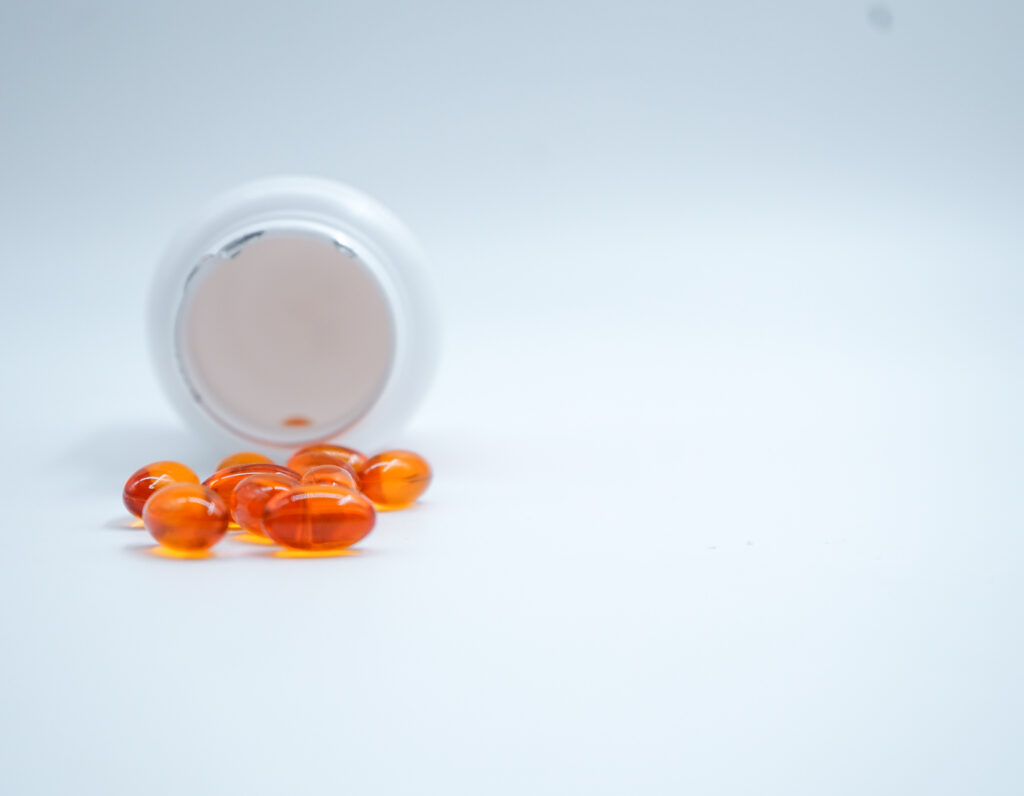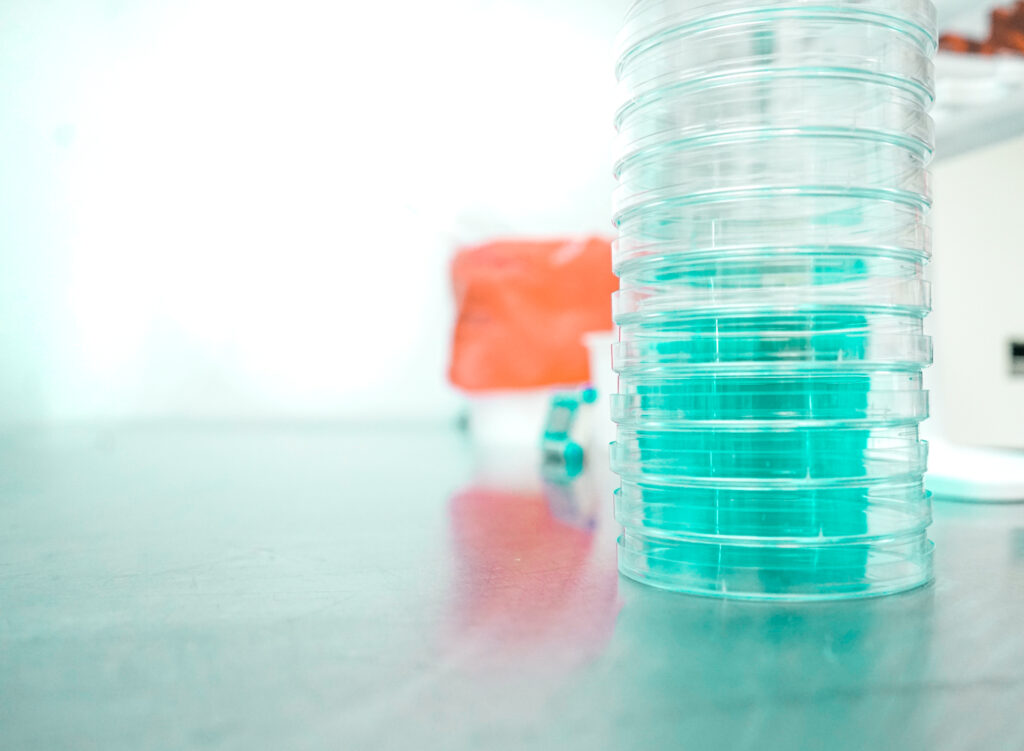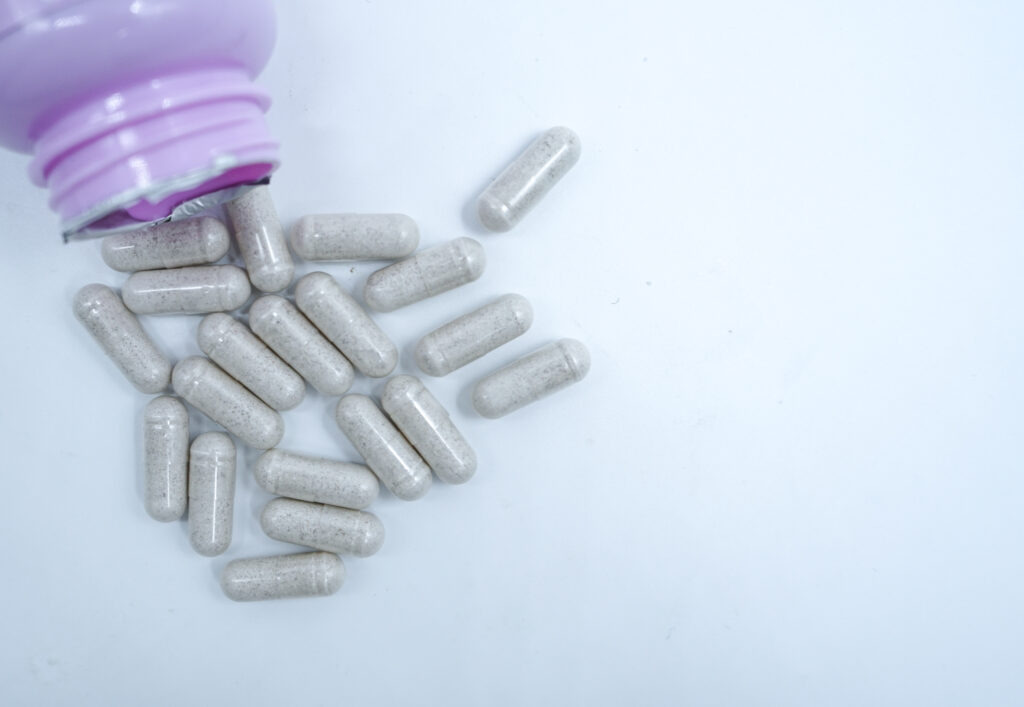USP Testing for Non-Sterile Pharmaceutical Products: Achieving Gold in Analytical Excellence

It is estimated that more than 131 million Americans — 66% of all adults in the country — use prescription drugs, making the pharmaceutical industry one of the most consequential businesses in the nation and around the globe.1 According to industry statistics, the pharmaceutical drug market has experienced significant growth over the past two decades; pharma revenues in the U.S. topped $490 billion in 2019, while the global pharmaceutical market was valued at $1.25 trillion (USD).2 With industry titans, like Johnson & Johnson, Pfizer, Lilly, Abbott Laboratories and Roche, setting the pace, the global pharmaceutical market — fueled by projected sales growth in Brazil, Russia, India, China, and other emerging marketplaces — is expected to reach $1.5 trillion (USD) by 2023.2The ongoing and sustained growth of the U.S. pharmaceutical drug industry is being driven by a number of factors, including 3,4
- A rapidly “graying American population” that is facing illnesses and chronic diseases that come with age;
- The continued rise in “lifestyle” diseases, such as heart disease, atherosclerosis, diabetes, and obesity;
- Greater public access to lower-priced pharma drugs through state and federal health policies, such as the landmark Affordable Care Act (ACA);
- Concerted efforts by the U.S. Food and Drug Administration (FDA) to facilitate the faster approval of new pharmaceuticals, allowing drug manufacturers to expedite products to the marketplace; and
- Increased innovation and R&D in the treatment of rare and specialty diseases.
First Do No Harm
Taking medications is an everyday part of the lives of many people, ranging from the very old to the very young. With each prescribed dosage or application, people from every walk of life rely on pharmaceuticals to treat maladies and improve their health. The enormity and gravity of this societal trust amplify the importance for pharmaceutical companies to manufacture, store and distribute products that are therapeutically effective and microbiologically safe.
Separate into Pharmaceutical Camps
In microbiological terms, pharmaceutical drugs can be divided into two groups: sterile and non-sterile.5 Sterile medications contain one or more active ingredients intended for administration by injection (i.e., parenteral), infusion, or implantation into the body’s circulatory system to achieve high bioavailability. Non-sterile medications include solutions, suspensions, ointments, creams, powders, suppositories, capsules, and tablets. Registered manufacturers of sterile pharmaceuticals are required to follow Current Good Manufacturing Practices (cGMPs) and adhere to rigorous quality standards to validate the stability, safety, and efficacy of products. From raw material procurement to the manufacturing process, to the evaluation of the finished product, these standards cover every aspect of the manufacturing supply chain. A number of scientific compendiums (e.g., the United States Pharmacopeia), regulatory guidelines (e.g., FDA), and international guidance documents (e.g., the World Health Organization) address these standardized requirements at great length.
Objectionable Microorganisms
As its designation denotes, sterile pharmaceuticals are produced under aseptic conditions, ideally rendering them free of microorganisms. Conversely, non-sterile products are allowed to possess certain types and levels of bioburden within the manufacturing process and in the final product.6Unlike sterile pharmaceutical products, regulations and guidelines governing non-sterile manufacturing are not as clear, robust or abundant. However, non-sterile manufacturers, under the Code of Federal Regulations (CFR) part 211.113, must establish and follow “appropriate written procedures, designed to prevent objectionable microorganisms in drug products not required to be sterile.” The FDA defines objectionable microorganisms as “microorganisms that can cause illness in patients or adversely affect a non-sterile product.”
Largely left to their own devices, many non-sterile manufacturers utilize risk assessment analysis tools to adapt portions of sterile manufacturing guidelines to assist in the development of environmental monitoring programs for their facilities.7 Environmental monitoring has long been recognized as an invaluable instrument to gain an understanding of microbial contamination sources. By monitoring trends in the manufacturing environment, stakeholders can ensure that procedures for preventing contamination are effective and that the facility is in a state of control. 7
FDA Recalls of Non-Sterile Products
For decades, microbial contamination has been a major problem for pharmaceutical manufacturers, both here and abroad. The presence of microorganisms in finished products can result in serious health effects, such as Salmonella infections. Individuals — especially those who are already ill, suffer from chronic conditions, or have compromised immune systems — can experience debilitating setbacks due to ailments (e.g., diarrhea, fever, chills, and abdominal pain) commonly associated with Salmonellosis and other microbial diseases.
Microbial contamination is a leading cause of product recalls of non-sterile pharmaceutical products by the FDA, which has regulated drug safety in the U.S. for over a century with the introduction of the Pure Food and Drug Act of 1906. A comprehensive review of FDA enforcement reports (2012–2019), published in the American Pharmaceutical Review, found that Gram-negative bacteria were the most common microbial contaminants of non-sterile drugs nationwide. Burkholderia cepacia complex, a group of bacteria that is found in various aquatic environments, was the leading cause for non-sterile drug recalls with 102 citations followed by Ralstonia pickettii (45 recalls) and Salmonella spp. (28 recalls).8
Unidentified microbial contamination, according to the study’s findings, accounted for 77% of non-sterile recalls, indicating extremely poor microbiology practices during the manufacturing process. 8 The presence of yeast and mold accounted for 52 recalls of sterile and non-sterile pharma drugs, with only 12% providing any information at the genus or species level.8Over the past few years, B. cepacia complex, which poses a contamination risk in non-sterile, water-based drug products, was identified as the cause of a number of highly publicized and costly recalls. These incidents prompted the FDA to issue an emergency advisory reminding drug manufacturers to follow a list of specific actions, such as analytical testing of incoming ingredients, to prevent the commercial release of unsafe products.9
Appropriate Testing
Microbiological testing in the non-sterile manufacturing environment is of paramount importance in preventing product recalls and protecting consumer health. This premise is underscored in CFR part 211.165(b) which states: “There shall be appropriate laboratory testing, as necessary, of each batch of drug product required to be free of objectionable microorganisms.” In meeting this decree, companies, who choose to work with outside testing laboratories, are advised to give particular consideration to engaging FDA-registered facilities that continuously demonstrate a commitment to meeting internationally recognized GMP standards in the manufacture of safe and quality products.
USP Microbiological Examination
The United States Pharmacopeia (USP) is recognized as the international gold standard in the microbiological examination of sterile and non-sterile pharmaceuticals. In the U.S., USP standards are recognized and enforced in various provisions of the Food, Drug, and Cosmetic Act, as well as in-laws, regulations, and policies promulgated by individual states. Three chapters in the organization’s monograph – USP <61>, <62> and <60> — are dedicated to testing methodologies for non-sterile products. The following section provides a brief overview of these official methods.
USP <61>: Microbial Enumeration Tests
The objective of this method is to determine the number of mesophilic bacteria and fungi that may grow under aerobic conditions. Mesophilic bacteria grow best at moderate temperatures, typically between 20 and 45°C. The ability of the test to detect microorganisms in the presence of a product must be established. Suitability is generally a one-time test but must be confirmed if a change in the product may affect the outcome of the test is introduced. Method suitability is performed by inoculating the sample with a quantity of a microbial load with individual bacteria and fungi or as a suspension. A control is similarly prepared and analyzed. The responses of the sample and control are compared for acceptance. The acceptance criteria for the plate count method is 50-200% recovery. Unless otherwise directed in the USP monograph, 10g or mL of the material is to be tested. For fluids in aerosol form, 10 containers are sampled. For transdermal patches, 10 units are sampled. Generally, it is highly recommended to submit twice the minimum quantity needed for testing.
USP <62>: Microbial Enumeration of Non-sterile Products: Tests for Specified Microorganisms

The objective of this method is to determine the presence or absence of the aerobic microorganisms Staphylococcus aureus, Pseudomonas aeruginosa, Escherichia coli, Salmonella, Candida albicans, the anaerobic microorganism Clostridium, or bile tolerant gram-negative bacteria. The ability of the test to detect the specified microorganisms in the presence of a product must be established. Suitability is generally a one-time test, but must be confirmed if a change in the product may affect the outcome of the test is introduced. Method suitability is performed by inoculating the sample with a quantity of each specified microorganism of interest individually. The acceptance criteria require the detection of the specified organism. If the acceptance criterion is not met, it may be due to the inherent antimicrobial properties of the sample that needs to be neutralized. A submission of not less than 10g or mL is sufficient for all pathogens.
USP <60>: Microbiological Examination of Non-sterile Products – Tests for Burkholderia cepacia complex
The objective of this test is to determine the presence of Burkholderia cepacia complex in pharmaceutical components or finished product. USP <60> specifies the test strains for growth promotion, suitability methods and selective media needed. The chapter, which was published late in 2019, builds on the test methods and acceptance criteria recommended in USP <61> and USP <62> to provide a relatively simple and reliable test for the detection of B. cepacia complex associated with the pharmaceutical manufacturing process.10It is important to note that the US Pharmacopeia permits the use of alternative testing procedures, including automated methods, in the analysis of pharmaceutical drugs. Laboratory analysts, however, are required to demonstrate the equivalency of the alternative method to the USP official method.
Microbac Migration
Drawing upon 50 years of industry experience, Microbac Laboratories, Inc., one of the largest independent laboratories in the nation, provides a comprehensive portfolio of expert services to the pharmaceutical industry from its FDA-registered facilities. From raw ingredient testing to navigating complex regulations, our dedicated team of researchers, scientists and technicians deliver solutions with accuracy, precision and confidence.
“Collectively, we offer decades of technical expertise to the pharmaceutical industry, says Timothy Klock, laboratory director of the organization’s Wilson, NC, testing facility. “On a daily basis, we commit ourselves to provide superior service to our valued customers — whether they are large, small, or virtual.”
Microbac has a lengthy and highly successful track record in working with pharmaceutical products in compliance with cGMP regulations. The laboratory is also registered with the Drug Enforcement Administration (DEA) for Schedule I-V controlled substances. Our areas of pharmaceutical expertise encompass:
- Raw materials: USP, Ph. Eur., JP, FCC, ACS, and BP
- Quality control tests: Raw materials; finished products; in-process testing; stability management and storage; and environmental monitoring for ISO-classified areas
- Dosage Forms: Parenteral preparations, oral solutions, powders, tablets, capsules, creams, and ointments
- Stability Storage: 25°C/60% RH; 40°C/75% RH; 30°C/65% RH; 5°C; -20°C; -80°C; photostability; cycling studies; and custom conditions
Due to the critical and elevated public role, it plays in human healthcare, the pharmaceutical industry faces constant and intense scrutiny from consumers and regulators, propelling companies to team up with reputable partners to manufacture safer and higher quality products. Many pharmaceutical manufacturers across the country are migrating to Microbac.
“It’s a huge understatement to say that pharma companies have a number of options available to them when choosing a laboratory,” notes Klock, who possesses over 30 years of research, method validation, stability study design, and project management experience in the pharmaceutical industry. “We specialize in delivering timely and value-added services to our customers . . . at the same time, we excel in building trusting and collaborative relationships that allow our clients to rest easy at night. That’s just one of the reasons why companies are choosing Microbac.” Contact us to learn more about our pharmaceutical industry services.

Sources:
1. Health Policy Institute. Prescription Drugs. Retrieved from https://hpi.georgetown.edu/rxdrugs/#
2. Global pharmaceutical industry – statistics & facts. Retrieved from https://www.statista.com/topics/1764/global-pharmaceutical-industry/
3. Nosco. The Pharmaceutical Industry is Growing. Retrieved from https://www.nosco.com/blog/the-pharmaceutical-industry-is-growing
4. GlobeNewswire. U.S. Pharmaceuticals Industry Analysis and Trends 2023. Retrieved from https://www.globenewswire.com/news-release/2020/01/17/1972088/0/en/U-S-Pharmaceuticals-Industry-Analysis-and-Trends-2023.html
5. Microbiological quality of non-sterile pharmaceutical products. M. Ratajczak, M.M. Kubicka, D. Kamińska, P. Sawicka, J. Długaszewska. Saudi Pharm J. 2015 Jul; 23(3): 303–307. Published online 2014 Dec 8. doi: 10.1016/j.jsps.2014.11.015.
6. The Cost of Microbial Control. Retrieved from www.pda.org/pda-letter-portal/home/full-article/the-cost-of-microbial-control
7. Booth, C. Designing An Environmental Monitoring Program For Non-Sterile Manufacturing A Risk-Based Approach. Pharmaceutical Online
8. American Pharmaceutical Review. Retrieved from https://www.pharmaceuticalonline.com/doc/designing-an-environmental-monitoring-program-for-non-sterile-manufacturing-a-risk-based-approach-0001 www.americanpharmaceuticalreview.com/Featured-Articles/518912-Analysis-of-FDA-Enforcement-Reports-2012-2019-to-Determine-the-Microbial-Diversity-in-Contaminated-Non-Sterile-and-Sterile-Drugs/
9. FDA. FDA advises drug manufacturers that Burkholderia cepacia complex poses a contamination risk in non-sterile, water-based drug products. Retrieved from www.fda.gov/drugs/drug-safety-and-availability/fda-advises-drug-manufacturers-burkholderia-cepacia-complex-poses-contamination-risk-non-sterile.
10. Pharmawebinars. Retrieved from https://www.pharmawebinars.com/usp-60-tests-for-burkholderia-cepacia-complex.
This document is not intended to provide scientific or other advice to be used in a specific fact situation and is intended for general information purposes only. While we encourage you to share this document or a link to it with others, this document or any portion of it may not be quoted or used in another publication without our express permission.